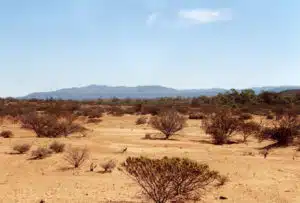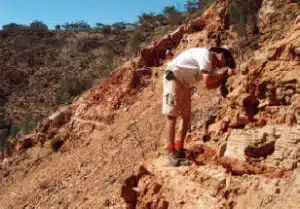Recent Australian earthquakes
In the past 100,000 years, Australia has been hit by at least five large, landscape-changing earthquakes, a young Melbourne researcher has found.
Each was at least 10 times as big as the 1989 Newcastle earthquake, which caused $1.5 billion damage. And he expects there to be more.
Mark Quigley, from the University of Melbourne’s School of Earth Sciences, has discovered large faults in the Flinders Ranges in South Australia and the Barrier Ranges in New South Wales which could only have been generated by earthquakes of a greater magnitude than 6.6 on the Richter scale.
“My results challenge the traditional view that the ancient landscape of the Australian continent is unaffected by modern geological processes,” Quigley says. “Parts of Australia’s landscape are much younger and dynamic than previously thought.”
The faults indicate that the Australian crust is being squeezed in an east-west direction, and is forming mountains as parts of it are broken and thrust upward. Using new dating techniques, Quigley and co-workers have studied the response of the landscape to this uplift. It seems that in addition to surface uplift, erosion rates have increased in recently faulted areas. This has resulted in steeper river gradients, steeper hill slopes, and thicker accumulations of sediment flowing out of the mountains.
Quigley estimates that landscape-changing earthquakes have occurred about once every 20,000 years on a large fault system north of Port Augusta in South Australia. Similar structures with similar recurrence intervals are likely to exist throughout South Australia, New South Wales, and Victoria, suggesting that the next big earthquake to hit southeastern Australia could occur within our lifetime.
Mark is one of 13 Fresh Scientists presenting their research to the public for the first time thanks to Fresh Science, a national program hosted by the State Library of Victoria. One of the Fresh Scientists will win a trip to the UK courtesy of the British Council to present his or her work to the Royal Institution.

Mark Quigley

Painterfront






 Fresh Science is on hold for 2022. We will be back in 2023.
Fresh Science is on hold for 2022. We will be back in 2023.